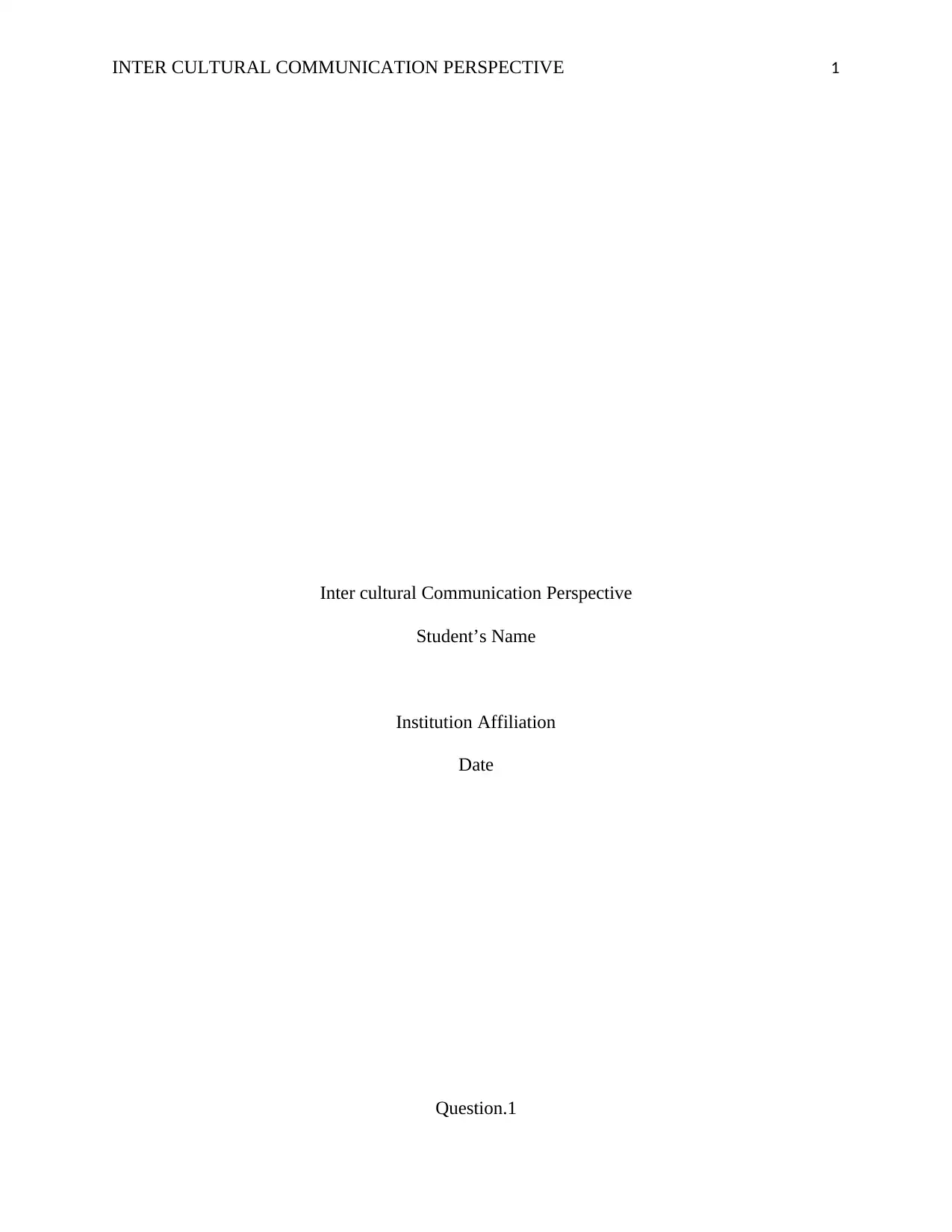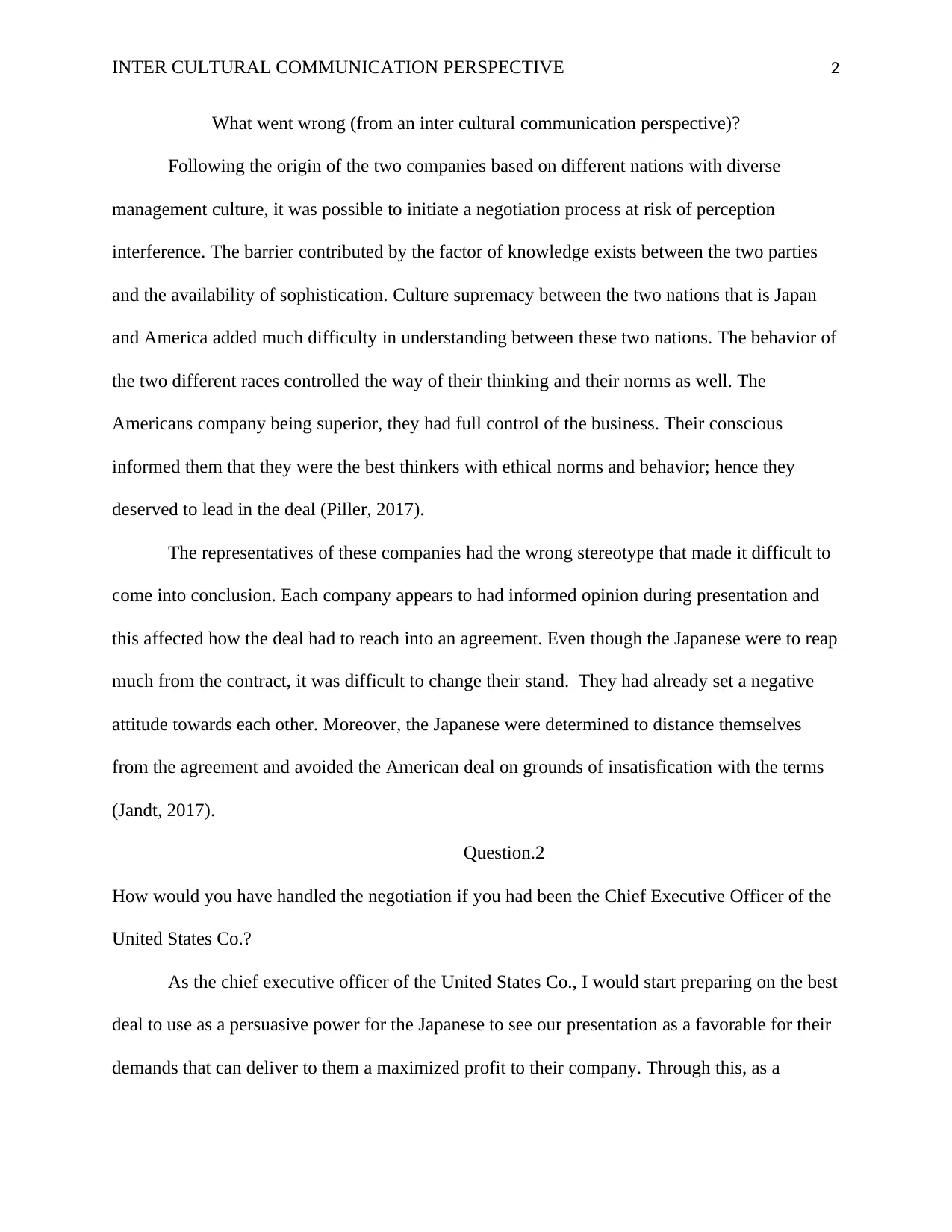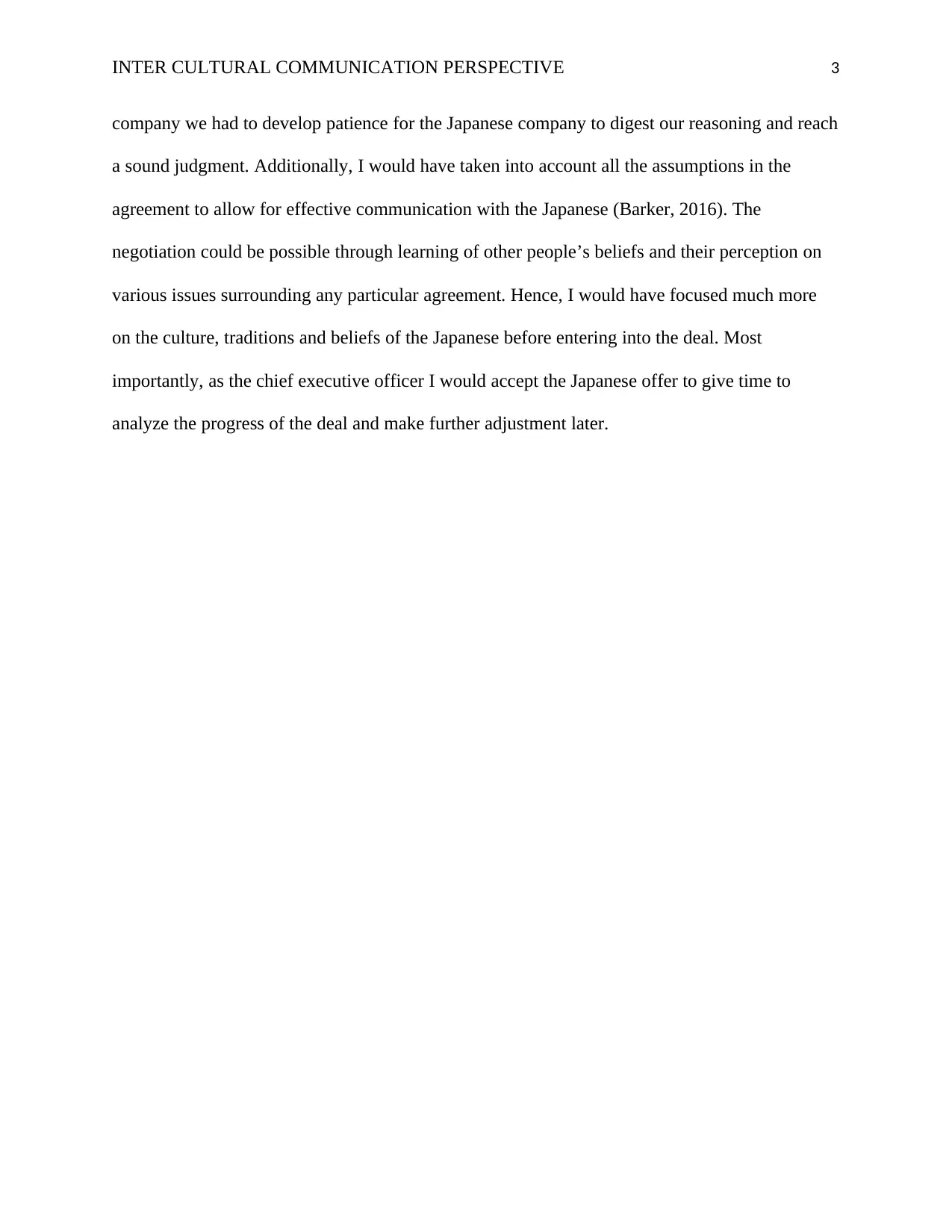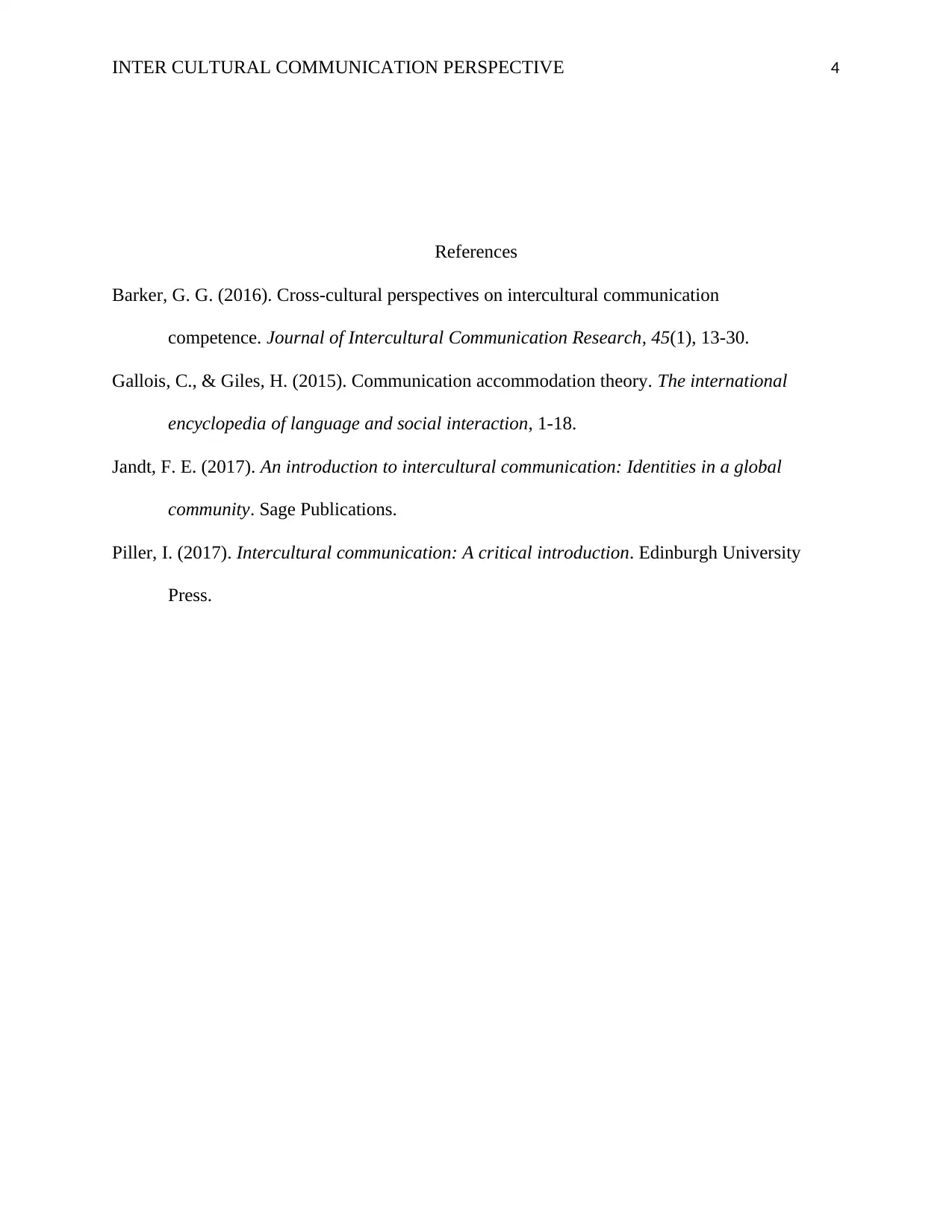Intercultural Communication: Analysis of a Failed Business Negotiation
VerifiedAdded on 2023/04/08
|4
|499
|167
Report
AI Summary
This report analyzes a case study of a failed negotiation between Videomart (American) and Osatech (Japanese) companies, focusing on the intercultural communication perspectives. The analysis explores the communication barriers, cultural differences, and stereotypes that led to the breakdown of the negotiation. The report examines the root causes of the issues, such as differing management cultures, assumptions, and lack of understanding of each other's business practices. The student offers insights into how the negotiation could have been handled differently, particularly from the perspective of the American CEO, emphasizing the importance of patience, understanding cultural nuances, and adapting communication strategies. The report concludes with a discussion of the impact of cultural supremacy, differing perceptions, and the role of effective communication in international business deals.
1 out of 4







![[object Object]](/_next/static/media/star-bottom.7253800d.svg)